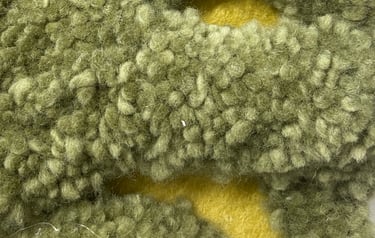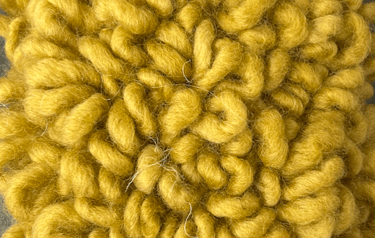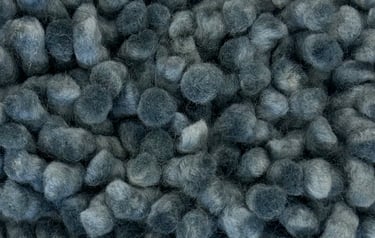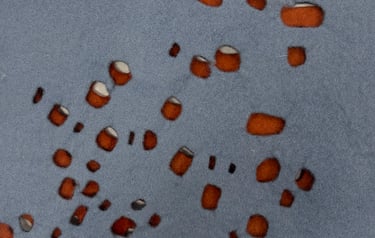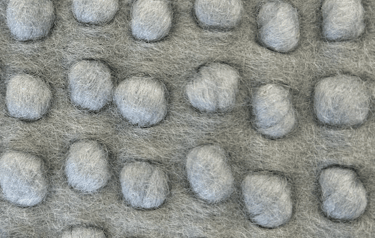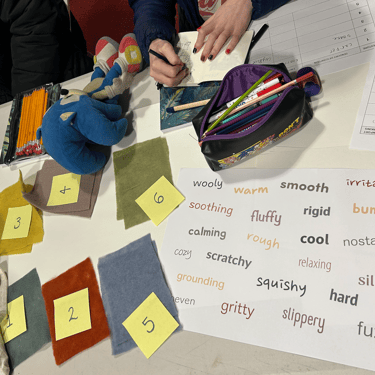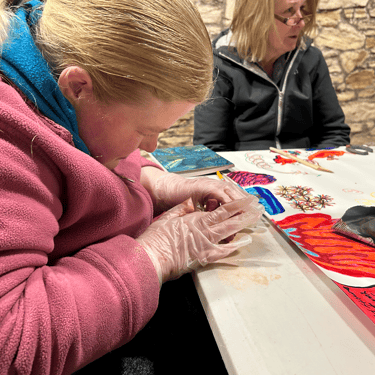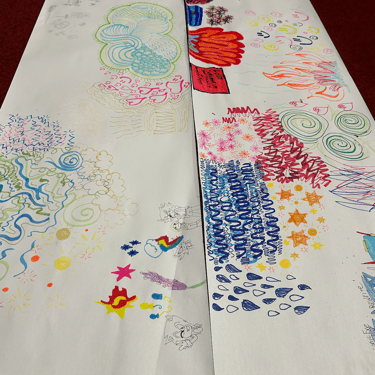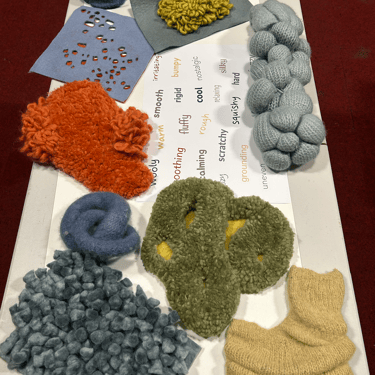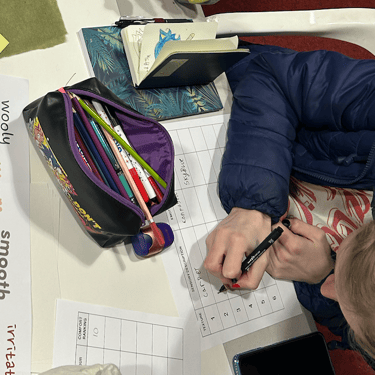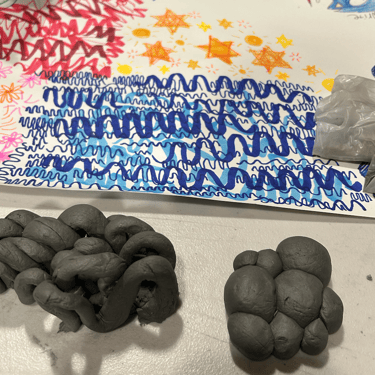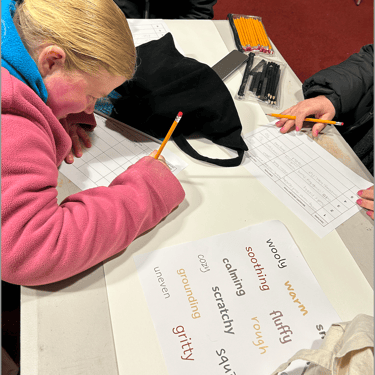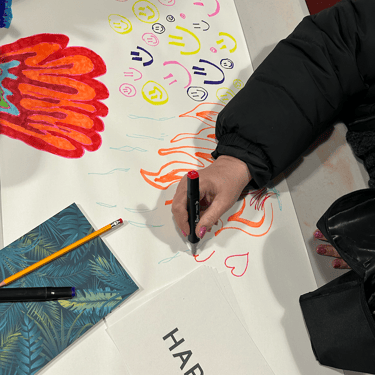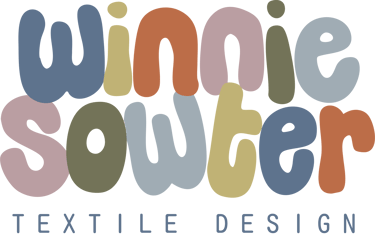Exploring Textures and Emotions Workshop
2/19/2025
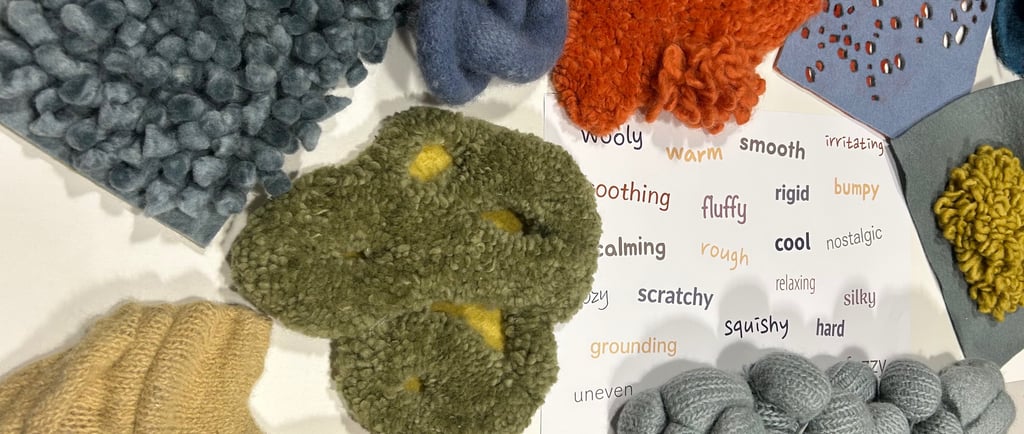

As the concept of exploring textures and emotions is so key in our project, it was important to me that the first workshop laid the foundation for understanding how textures and colours can influence our emotional responses. This week, the workshop was deisgned to help the group connect emotionally with various textures. It was really interesting to see how different people connected with the activities, and I think the creative approach really helped everyone get involved. I really think the dat set up a strong foundation for the rest of the project and got everyone thinking about texture as something more than just a physical quality but a way to express emotions and tell stories through design.
The icebreaker activity worked really well to create a relaxed and open atmosphere. People were happy to share personal memories of comforting textures-soft blankets, warm wool jumpers etc. I found the interns had no trouble getting involved and speaking about their experiences of textures and emotions. However, some of the carers and volunteers were a bit more reserved at first, but once a few people spoke, the conversation started to flow naturally, and everyone gradually felt more comfortable sharing. The sensory blindfold exercise was where engagement peaked. The group seemed to find it fun but also slightly challenging to describe textures without relying on sight. Some interns were initially reluctant to touch the textures without seeing them and to express their emotions through words, but once they started making associations with colours and memories, they became more confident.
The textures used for the blindfold activity were my textured fabric samples. The interns and volunteers filled in activity sheets and these were the key responses I found:
For harder, rougher textures words like “confusing,” “disturbing,” “worrying,” and “awkward” were written. Some found them unsettling or overstimulating.
The softer textures were described as “calming,” “intriguing,” “soothing,” and “relaxing”, this was the same for both the very tactile and the more flat soft textures. These materials were widely preferred, with many associating them with comfort and security.
Words like cosy, soothing, and harsh were used frequently in group discussions, with interns also giving imaginative descriptions (e.g., “feels like sonic the hedgehog”). A few people needed extra encouragement to associate textures with emotions and colours, but once they linked them to real-life experiences, they became more engaged. During the brainstorming and sketching session, people found it easier to visually express emotions than to describe them in words. When prompted to draw something that feels calming or happy wavy, flowing lines were common while jagged, chaotic strokes represented stress or anger. The clay modelling exercise was also a key moment in the workshop-it really helped bring ideas to life. Moving from 2D sketches to 3D forms made abstract concepts feel more real. It made it much easier for everyone to visualise how textures could be transformed into a physical design.
Preferred Textures and Final Design Choices
Throughout the workshop, certain textures emerged as strong favourites:
Soft and fuzzy textures – repeatedly associated with warmth, comfort, and security. These were described as “soothing” and “safe,” with colours imagined as blues, greens, pinks and yellows.
Bumpy and rough – Mixed reactions. Some found it stimulating and exciting, describing it as “intriguing” and “energetic,” while others found it uncomfortable. Associated with bright yellow, green and orange.
Scratchy and coarse– Generally disliked. Often linked to irritation or discomfort. Colours imagined were brown, red and black.
For the final design, the interns voted using post-it notes to choose the three most engaging textures. The top 5 selections were:
It was really interesting to see that most people gravitated toward softer, comforting textures over harder ones. Something that was also so unexpected was the choice of the first texture which was actually the reverse side of the third sample. I wasn't expecting this to be chosen at all but it was actually really exciting to see my work being used in a way I hadn't even considered myself. It really reinforced to me how important involvment of the communities you are designing for actually is. Getting direct opinions and experiences from those who will benefit from the designs can completely change the creative direction which is exactly what I experienced here first-hand. It is amazing the new ideas that can come from collaboration as I hadn't even considered that anyone could be drawn to that texture.
Overall, Workshop 1 was a great start! The energy and enthusiasm from the interns was amazing, and the insights gained from their texture preferences will directly shape my upcoming design work. The sensory blindfold activity was successful and everyone seemed to enjoy the challenge of relying only on touch. It was especially interesting to see how some of the interns really embraced it as a way to connect emotions with textures, while a few of the adult volunteers and carers were a bit more skeptical at first. But as the activity went on, most people started to engage more deeply and have interesting conversations.The voting system worked really well, giving everyone a sense of ownership over the final design choices. It made the process feel collaborative, and it was great to see everyone thinking critically about which textures they wanted to include. One thing I did notice is that a few people struggled with associating textures and colours. While most easily linked textures and emotions, linking them to specific colours was maybe too much of an abstract concept for some.
One of the highlights from the session was hearing that a usually quiet participant became one of the most vocal in the group. This really reinforced to me just how beneficial working with texture and crafting can be in unlocking confidence and self-expression. Next week we’ll start working with materials, looking at the process from the raw Lucky Ewe sheep wool to final textile creations.
